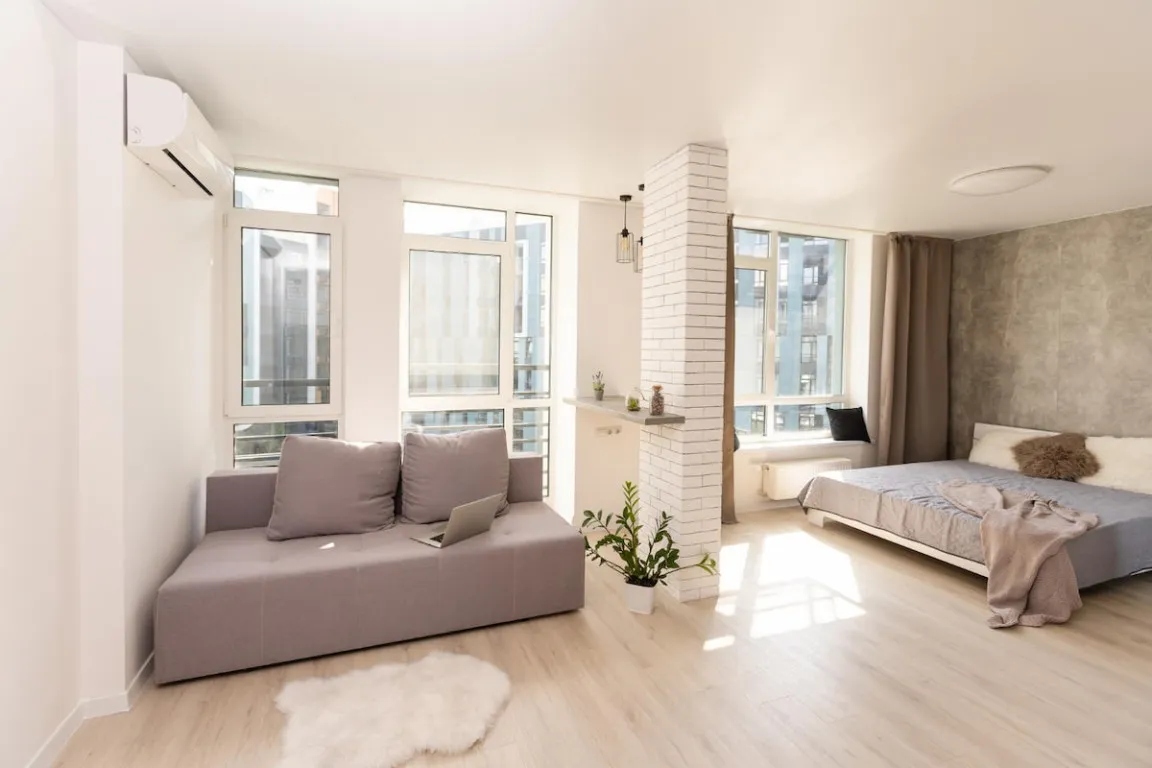A good home air circulation is an important aspect that you should not ignore because an uneven air flow can trigger fungus and bacteria growth on walls and cause respiratory problems to the dwellers.
On the other hand, optimal air circulation can prevent excessive dampness on the wall, reducing the risk of harmful illness. Moreover, a clean air flow makes your rooms fresh and comfy.
Worry not, it is easy to maintain the home air circulation. To get to know more about how to enhance home air circulation, read the explanation below!
How to Improve Home Air Circulation
During the planning, you must ensure that the house design allows good air circulation. Yet, if you have built your home, there are some adjustments you can make to improve the home's air circulation. Here are some tips you can follow:
1. Pay Attention to Windows and Doors Placing
Windows and doors are elements through which air can get in and out of your home. To maximize the air circulation, you can place them according to wind direction.
In addition, you can place a big window in the room with high activity or a need for fresh air, such as the kitchen, family room, or dining room. That way, the house occupants become more comfortable thanks to the cool atmosphere produced.
2. Install Roster
If your house has a not-so-wide wall, you can install a roster to improve the air circulation because a roster is relatively smaller. A roster is a small-holed ventilation that you can install on the wall.
Other than improving the air circulation, you can also decorate your wall using a roster, emphasizing the architectural style. You can choose roster designs, motives, materials, and colors following your house concept.
3. Implement Cross Ventilation
Cross ventilation is a combination of two or more wall openings in the building that face each other. With this crossing, cold air from outside can easily enter and replace the stuffy air in the house.
Not only implement cross ventilation, but you must also place your furniture properly to prevent it from blocking the air. With cross ventilation, the air circulation becomes more maximal and effective.
4. Install Skylight Windows
As the name suggests, skylight windows are windows installed at the ceiling. This kind of window can enhance the air circulation, especially if your house is too close to another building.
Skylight windows must be designed with an open-close mechanism to let the air in. In addition to improving air circulation, these windows also allow plenty of sunlight to enter the house.
5. Implement High-Ceiling Concept
To improve the air flow, you can implement a high ceiling concept in the home air circulation designs. This concept requires a great design, which is ideally around 2.4 meters from the floor.
Yet, you can adjust the height according to your needs. If you live in a tropical climate, you can adjust the height to 1.8–3.2 meters. Meanwhile, if you live in a colder area, a 2.4–2.5 meters of height is enough to maintain the air flow.
Read also: 9 House Designs Maximizing Natural Light You Must Know
6. Use Sliding Doors
Compared to common doors, sliding doors are bigger and taller in size, which can reach the ceiling. When the door opens, the air flow can get into the house, smoothing the air circulation.
A modern-style house usually uses sliding doors to make it more minimalist and elegant. The sliding doors' placement is also relatively flexible, such as in the dining room, living room, outdoor kitchen, or a room connected to the backyard.
7. Grow Greens
There are two ways you can leverage the greens as air circulation enhancers, one is creating a garden around the house, and two is placing pots of plants inside your house. Both ways can refresh your home naturally.
This is because greens can filter the air pollution, cleaning the air quality. Plants can be placed in an area near the kitchen or in the backyard.
8. Avoid Direct Sun Exposure
The sun exposure can increase the temperature of your room, making your home hotter. Moreover, if your building faces the north or west, it will be intensely exposed to the sun; thus, it is not recommended to build a home facing those directions.
Yet, if that's already the case, you can install a canopy to reflect the sun and minimize the heat. In addition, adding curtains to windows can also limit the sunlight that enters.
9. Install an Exhaust Fan
As an air circulation tool at home, an exhaust fan is good to install in a room with high humidity, such as a bathroom or a kitchen. It works to pull the excessive air and humidity, maintaining the air circulation.
For a windowless room, an exhaust fan works to remove steam and warm water as well as reduce odor to make the room stay fresh and convenient.
Read also: 9 House Designs Maximizing Natural Light You Must Know
10. Always Open Doors and Windows
Despite designing buildings to have smooth air circulation, if your doors and windows stay shut, the home may still feel hot. In fact, opening doors and windows is the easiest way to improve air circulation.
You can open the doors and windows from morning to evening. However, if you live in a high-pollution area, you can open doors and windows at dawn and night to avoid pollution.
11. Use a Humidifier and a Dehumidifier
Both a humidifier and a dehumidifier work as air circulation tools, but they have opposite functions. A humidifier is used in dry air, usually when the temperature is low.
Conversely, a dehumidifier is used when the humidity level is above normal to prevent mold and fungus growth. Therefore, only use both tools based on the location, season, and house condition.
12. Clean Air and AC Filter
The air and AC filter must be frequently cleaned, at least 4 times a year, to prevent fungus and allergens from spreading all over the room. If you do not clean it, the mold and allergens can be inhaled by the people of the house.
In the long term, the uncleaned AC filter can harm your health and your family. In addition to avoiding these negative impacts, this process can also reduce electricity bills because the AC can work more efficiently.
Those are some ways to make the home's air circulation better and flow effectively. If you are planning to build a house, remember that material selection is also important to maintain the rooms’ humidity.
To minimize the risk of humid walls due to water seepage, you can use Semen Merah Putih Watershield with water repellent technology.
The water repellent technology will protect your house from three types of water seepage: inside, outside, and from the ground. Thus, it will maintain the humidity and avoid harmful bacteria and fungi.
Not only walls, but you can also apply this premium and multipurpose cement to several parts of the building, such as foundation, concrete roof, casting, bricklaying, plastering, and skim coating.
By designing a suitable building design and using quality cement such as Semen Merah Putih, you can create a beautiful and healthy home to live in.
Want to know more about Semen Merah Putih’s products? Contact us now, and we will help you with high-quality products and top-tier service!
Read also: 10 Minimalist 3 Bedroom House Designs to Inspire You!



